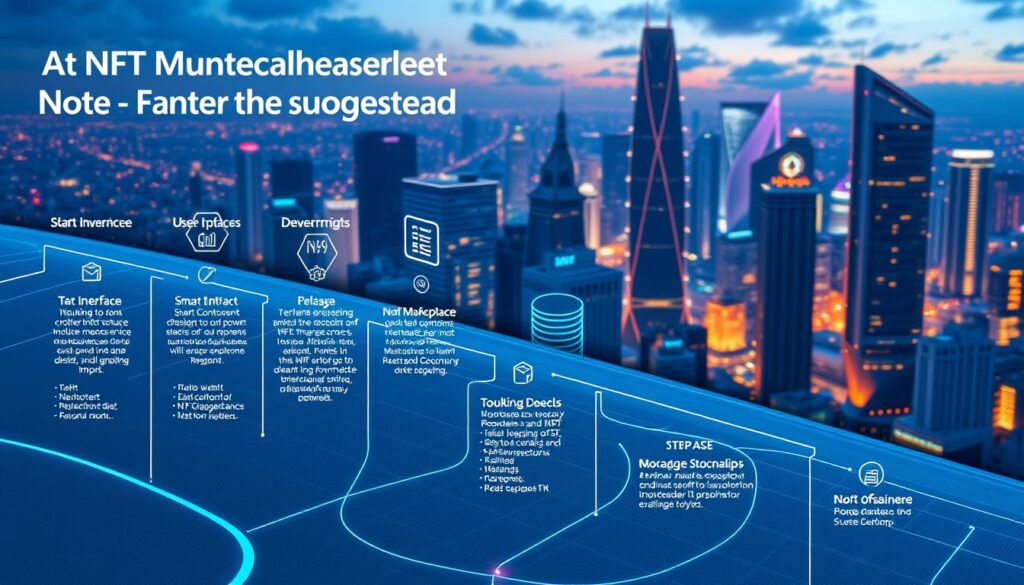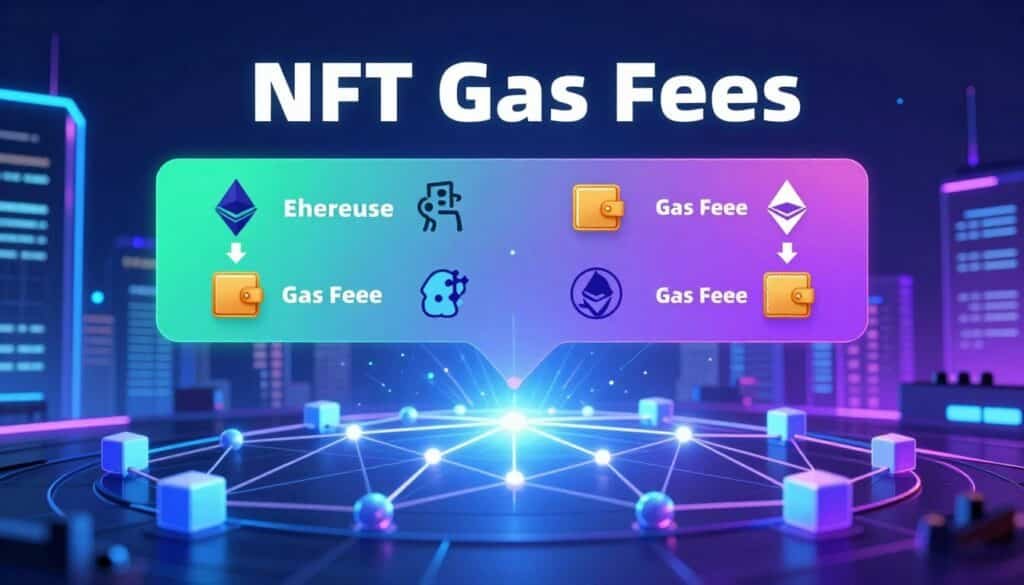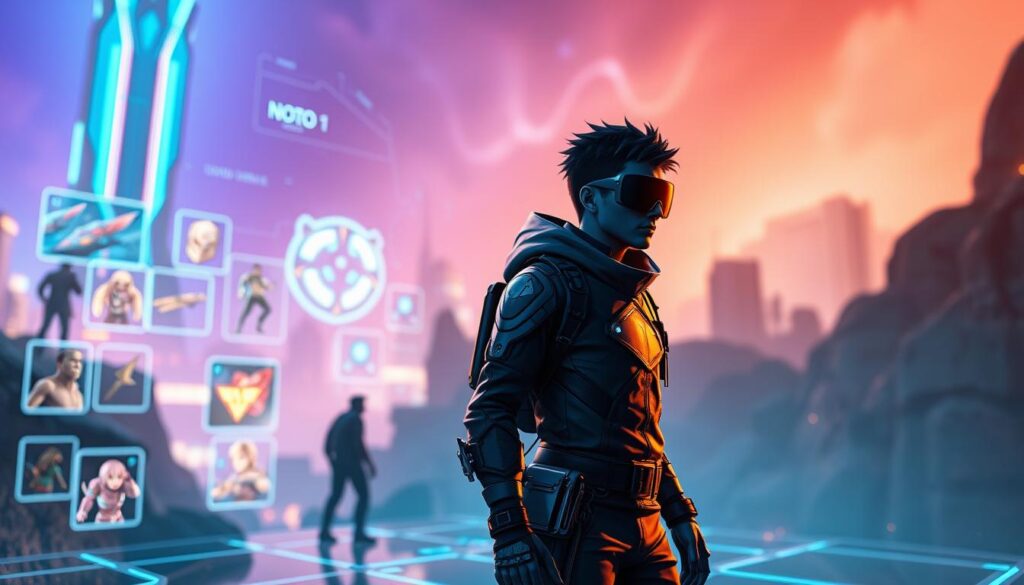Now Reading: How to Build NFT Marketplace from Scratch: Technical Development Guide
- 01
How to Build NFT Marketplace from Scratch: Technical Development Guide
How to Build NFT Marketplace from Scratch: Technical Development Guide

The digital asset economy continues evolving rapidly, with blockchain-based platforms reshaping ownership concepts. Recent market shifts reveal a fascinating story: After explosive growth to $41 billion in 2021 and $100 billion in 2022, NFT trading volumes settled at $25 billion in 2023. This correction phase creates unique opportunities for innovators ready to launch next-generation platforms.
Industry experts view 2024 as a pivotal year for reinventing digital ownership systems. New use cases in gaming, intellectual property, and real-world asset tokenization are driving renewed interest. Successful platforms now require robust technical frameworks combined with innovative business strategies.
This guide explores essential components for creating competitive blockchain ecosystems. We’ll examine infrastructure requirements, revenue models, and user acquisition tactics that separate thriving platforms from stagnant ones. The following sections provide actionable insights for developing secure, scalable solutions in today’s dynamic market.
Key Takeaways
- Market corrections create openings for innovative digital asset platforms
- Next-generation solutions require advanced blockchain integration
- Revenue models must adapt to evolving user behaviors
- Security protocols remain critical for platform credibility
- Cross-chain compatibility enhances market reach
- User experience design impacts long-term engagement
Understanding the NFT Ecosystem
The evolution of digital ownership has transformed how we perceive value in virtual spaces. This shift creates complex interactions between creators, collectors, and platforms. Analyzing market patterns helps identify sustainable strategies for new entrants.
Historical Performance and Market Shifts
Between 2020 and 2021, trading activity surged 400x – from $33 million to $41 billion. Three factors fueled this growth:
- Celebrity-backed digital art collections
- Play-to-earn gaming ecosystems
- Mainstream media coverage
By 2022, the industry expanded into music royalties and virtual real estate, pushing volumes past $100 billion. This diversification proved NFTs could serve practical needs beyond speculative trading.
Current Challenges and Strategic Opportunities
Last year’s correction to $25 billion exposed market vulnerabilities. Macroeconomic pressures and oversaturation tested platform resilience. However, this reset enables:
- Focus on genuine utility over hype
- Improved non-fungible tokens (NFTs) standardization
- Development of hybrid revenue models
Forecasts suggest $683 million in 2024 revenue, signaling a stabilization phase. Successful platforms will leverage this maturation to build trust through transparency and innovative use cases.
Defining Your Platform Concept and Target Audience
Strategic market positioning separates thriving digital collectible hubs from generic trading portals. Successful platforms align technical capabilities with specific community needs, creating tailored ecosystems for distinct user groups.

Identifying Your Unique Value Proposition
Specialization drives engagement in saturated markets. Curated art spaces attract high-net-worth collectors through exclusive drops, while open platforms empower independent creators. Gaming ecosystems require asset interoperability, and real estate tokenization demands legal compliance frameworks.
Consider these differentiation strategies:
- Premium verification for luxury collectibles
- Cross-platform gaming asset transfers
- Fractional ownership structures for physical assets
Setting Revenue-Generating Opportunities
Modern platforms combine multiple income streams beyond basic transaction fees. Hybrid models balance immediate profits with long-term community incentives.
| Revenue Source | Art Platforms | Gaming Marketplaces | Collectible Hubs |
|---|---|---|---|
| Primary Income | Curator commissions (15-30%) | In-game currency conversion fees | Limited edition minting fees |
| Secondary Streams | Virtual gallery rentals | Season pass subscriptions | Authentication services |
| Emerging Models | Royalty-sharing DAOs | Esports tournament sponsorships | Physical-digital bundle sales |
Sports memorabilia platforms like NBA Top Shot demonstrate how scarcity models boost collectible value. Meanwhile, educational content marketplaces are testing learn-to-earn systems where users monetize course completion certificates.
Meeting the Technical Demands: Blockchain and Infrastructure
Blockchain architecture serves as the backbone for digital asset platforms, determining their capabilities and limitations. Effective infrastructure design balances scalability with decentralization while maintaining cost efficiency. Technical decisions here directly influence platform performance and user retention.

Selecting the Right Blockchain Network
Network choice impacts transaction speed, fees, and community access. Ethereum dominates with established standards like ERC721 and ERC1155, but newer chains offer specialized benefits:
| Blockchain | Best For | Speed (TPS) | Avg. Cost |
|---|---|---|---|
| Ethereum | High-value collectibles | 15-30 | $2-$50 |
| Solana | Gaming assets | 65,000 | $0.001 |
| Flow | Mass-market apps | 100+ | $0.10 |
Binance Smart Chain suits cost-sensitive projects, while Tezos appeals to eco-conscious users with its low-energy design. Cross-chain compatibility tools expand market reach without locking into single-network limitations.
Integrating Metadata Storage and Third-Party Services
Persistent asset data requires robust storage solutions. Decentralized options like IPFS prevent single-point failures, while Arweave guarantees permanent file retention. Key integration considerations include:
- Data retrieval speeds for global users
- Encryption standards for sensitive information
- API compatibility with analytics tools
Wallet support remains critical – platforms must connect with MetaMask, Coinbase Wallet, and chain-specific options. Reliable node providers like Alchemy ensure consistent blockchain access during traffic spikes.
How to build NFT marketplace from scratch technical development guide

Launching a successful digital collectible platform demands meticulous execution across ten critical phases. Each stage builds upon the previous one, creating a cohesive ecosystem that balances technical requirements with user expectations.
The journey begins with concept validation – establishing clear objectives, target demographics, and unique features. Market research here prevents costly redesigns later. Team formation follows, requiring specialists in blockchain protocols, smart contract security, and crypto-native interface design.
Core implementation phases include:
- Smart contract development using audited templates
- Backend architecture supporting high-volume transactions
- Cross-chain compatibility integration
Design teams work concurrently on interface prototypes while developers handle infrastructure setup. Responsive layouts and intuitive navigation prove crucial for retaining users unfamiliar with blockchain mechanics. Front-end implementation then bridges visual concepts with functional Web3 interactions.
| Stage Group | Key Activities | Typical Timeline |
|---|---|---|
| Foundation (1-3) | Concept finalization, team assembly | 4-6 weeks |
| Core Build (4-6) | Contract coding, UI/UX implementation | 12-16 weeks |
| Launch Prep (7-10) | Security audits, stress testing | 6-8 weeks |
Post-development phases ensure platform reliability through third-party security assessments and real-world testing scenarios. Final deployment requires careful monitoring to address initial user experience issues before full marketing rollout.
Building a Skilled Development and Design Team
Assembling the right talent determines whether digital platforms thrive or stagnate. Specialized skills in blockchain systems and user-centric design form the foundation for sustainable growth. Teams must balance technical precision with creative problem-solving to navigate this fast-moving sector.
Core Technical Expertise Requirements
Blockchain engineers need expertise in:
- Smart contract languages (Solidity, Rust)
- Multi-chain interoperability solutions
- Security audits for asset protection
Smart contract specialists should optimize transaction costs and prevent vulnerabilities. Experience with DeFi protocols and tokenomics models proves invaluable for creating efficient ecosystems.
Design and Growth Strategies
UI/UX designers face unique challenges in simplifying complex processes. Effective solutions include:
- Visual asset preview systems
- Streamlined wallet integration flows
- Educational tooltips for new users
Marketing teams require deep understanding of crypto-native communities. Successful strategies often combine influencer collaborations with data-driven social campaigns.
Many projects benefit from outsourcing to specialized firms when building in-house capacity proves challenging. This approach provides access to vetted professionals while maintaining focus on core business objectives.
Designing an Intuitive UI/UX Experience
User engagement hinges on the delicate balance between aesthetics and functionality. Platforms that master this harmony see 40% longer session times and 25% higher conversion rates. Effective interfaces simplify blockchain complexities while maintaining visual appeal.

Front-End Design Priorities
Wallet integration sets the tone for the entire experience. Clear tutorials help newcomers connect digital wallets in under 90 seconds. Experienced traders appreciate quick-access menus for bulk operations.
Media display capabilities determine content impact. Optimized grids showcase collections without lag:
| Media Type | Loading Threshold | Optimal Resolution |
|---|---|---|
| Static Images | 1200px width | |
| Animated GIFs | 800px width | |
| 3D Models | WebGL optimized |
Transaction flows require transparent status indicators. Real-time gas fee estimators and confirmation trackers reduce abandonment rates. Color-coded alerts help users understand blockchain processing stages.
Search systems need layered filtering:
- Price range sliders
- Collection rarity filters
- Creator verification badges
Adaptive layouts serve diverse needs. Casual browsers get educational pop-ups, while power users access advanced trading dashboards. Regular heatmap analysis refines these interfaces based on actual behavior patterns.
Developing Robust Smart Contracts
Self-executing code revolutionizes how digital ownership transfers occur in virtual markets. These automated agreements enforce platform rules without intermediaries, requiring bulletproof logic to handle high-value transactions securely.
Ensuring Security with Audited Code
Battle-tested libraries like OpenZeppelin provide essential building blocks for secure smart contract development. Using pre-audited ERC721 and ERC1155 templates reduces vulnerabilities while maintaining compatibility with major wallets. Regular third-party audits identify potential exploits before deployment.
Developers enhance security further through:
- Automated testing for edge cases
- Multi-signature deployment controls
- Real-time monitoring tools
Custom Logic for Minting and Royalty Management
Advanced platforms require tailored solutions for asset creation and profit sharing. ERC-2981 standards enable automatic royalty distributions, while custom minting systems support:
- Dutch auction pricing models
- Whitelist access tiers
- Batch processing for collections
Successful implementations balance innovation with reliability. Secure smart contract development remains critical when handling digital assets worth millions. Platforms combining rigorous audits with flexible functionality gain long-term user trust.















